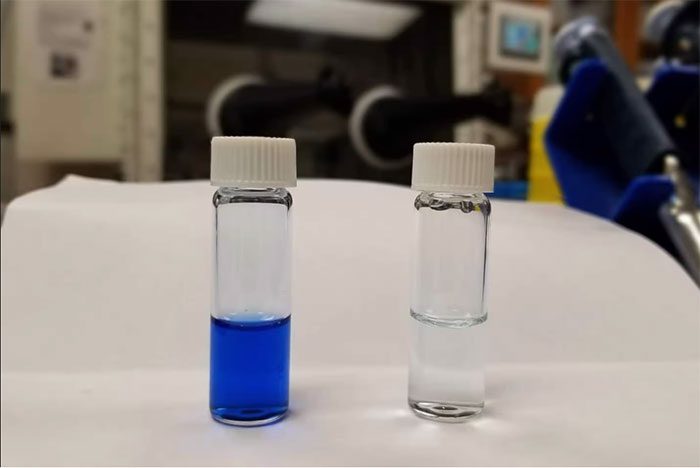In wastewater produced by the textile industry and other sectors, dyes are one of the main pollutants. A new synthetic polymer has been developed that can remove these colored dyes from water; furthermore, it can be cleaned and reused to treat more wastewater.

A jar of water contaminated with blue dye (on the left), alongside a jar containing the polymer used to remove the dye.
The nitrogen-rich polymer, insoluble in water, is known as polycarbodiimide, and it was created by a research team at North Carolina State University.
In experiments, the polymer was dissolved in a solvent and then mixed into samples of water contaminated with 20 different types of acid dyes commonly used in the textile industry. Depending on factors such as acidity and the surface area of the dye molecules, the polymer successfully removed all dyes from 16 of the samples, which was assessed visually and using ultraviolet-visible spectroscopy.
The polymer works by binding to the dye molecules, which then rise to the top of the polymer/water solution, forming a distinct layer (similar to oil floating on water). It can then be skimmed off the container, leaving behind dye-free water. According to Professor Januka Budhathoki-Uprety, because both the polymer and the solvent are insoluble in water, no traces of either remain in the water.
By adjusting the pH of the dye-laden polymer that has been poured out, the polymer can release the dye molecules within minutes. The polymer can then be reused in subsequent wastewater treatments. Professor Budhathoki-Uprety and colleagues currently plan to create another version of the polymer that works on a wider variety of dyes. They also hope to incorporate the polymer into a solid filtration medium.


















































